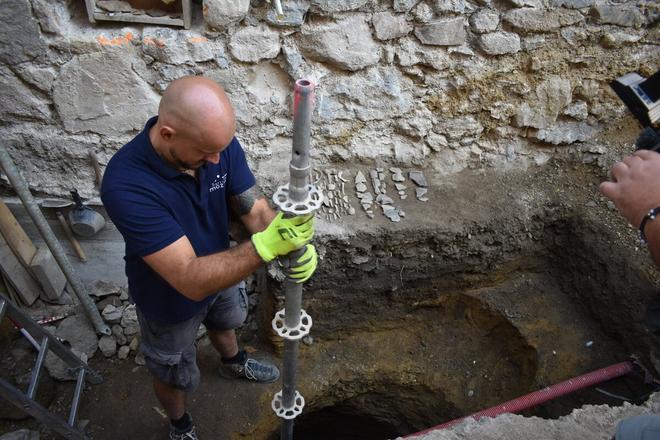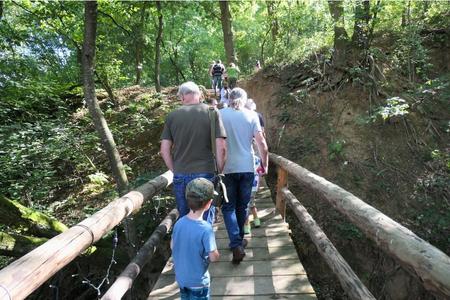Archaeologists have uncovered a rare Celtic sacrificial pit during renovation works at Trenčín Castle in western Slovakia. The Late Iron Age feature contained the skeletal remains of at least five people, including a child.
It is only the third such pit found in the country, with previous examples identified at Havránok near Liptovská Mara and beneath Bratislava Castle, according to My Trenčín. The remains are expected to go on display after further study.
The discovery was made by chance when Juraj Malec, from Trenčín Museum, noticed an unusual feature during excavation. A cross-section revealed pottery shards and human bones.
“At first, we thought it was a storage pit, but we soon realised it was ritual,” said Malec. “The Celts would kill, dismember and place their victims in pits as offerings to their gods.”
The pit, located near the castle’s upper entrance, dates to the 2nd century BCE – long before the fortress itself was built. Excavation will continue once the bones have been documented and removed.
Alongside the human remains, archaeologists uncovered animal bones and pottery fragments, likely part of later infill.
Katarína Špačková of the Trenčín Museum said the discovery underlines the hill’s long-standing importance. “The site above the Váh river was a strategic point for millennia. Finds like this show the Celts already viewed it as significant.”
The research forms part of wider renovation work ahead of 2026, when Trenčín will be European Capital of Culture.







